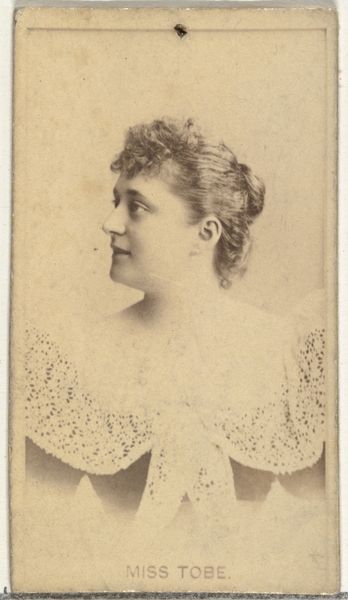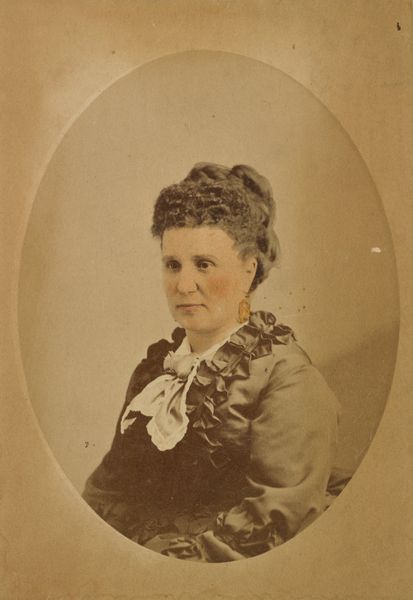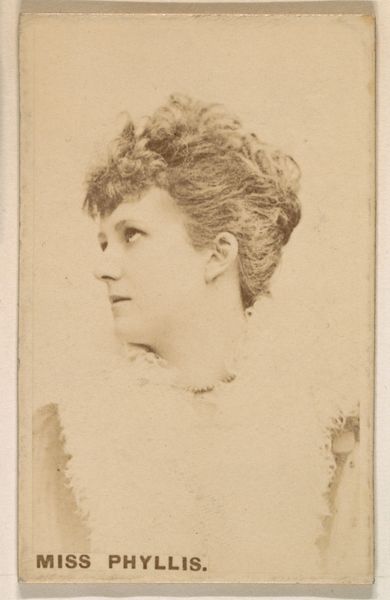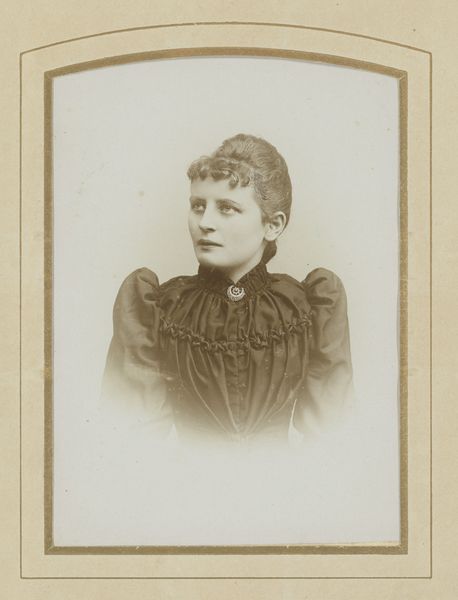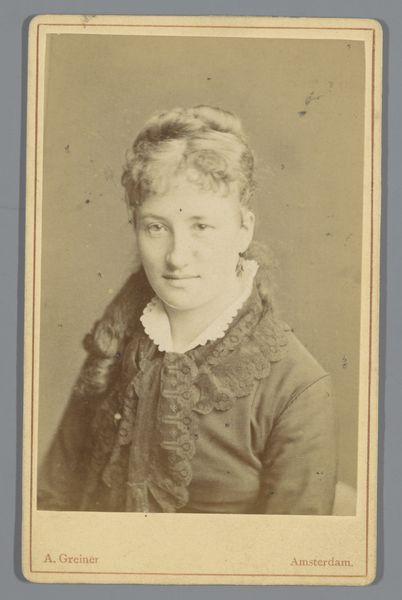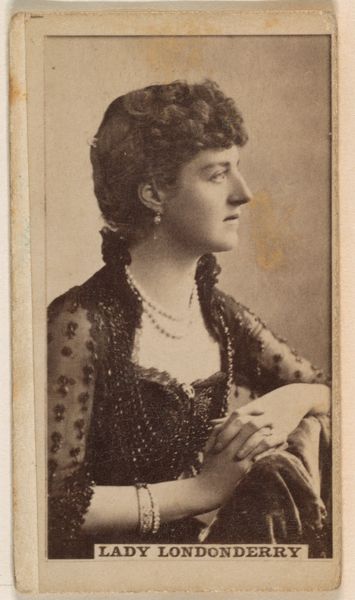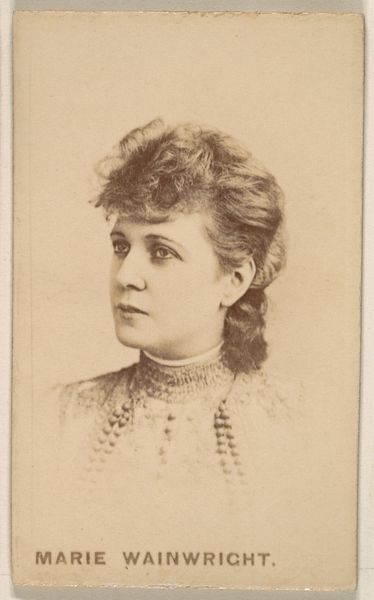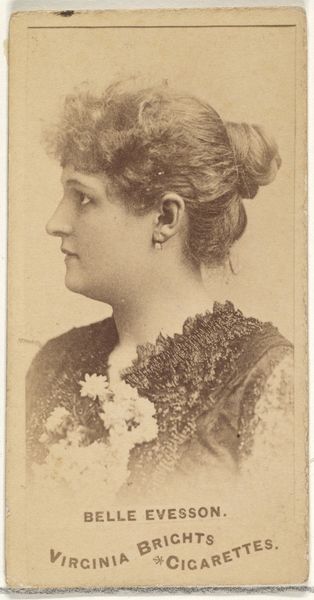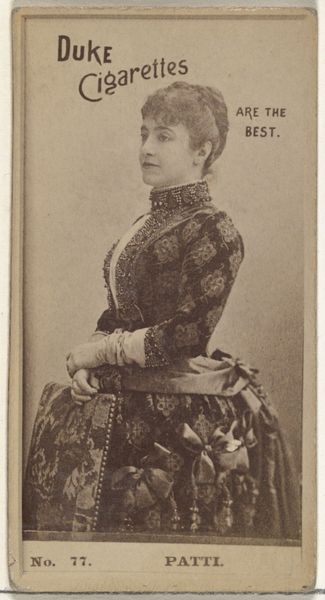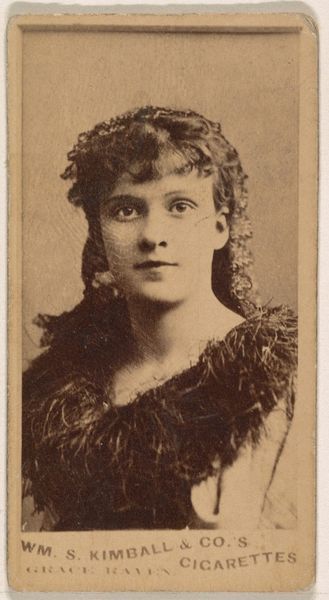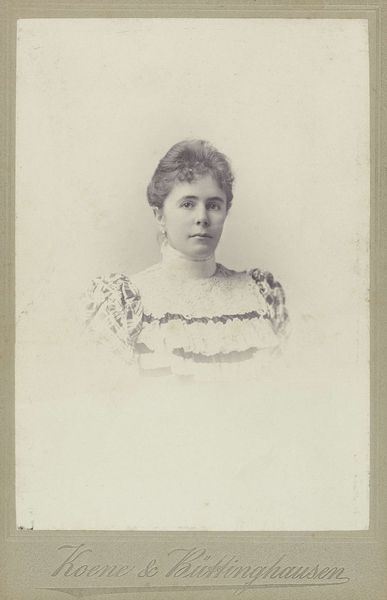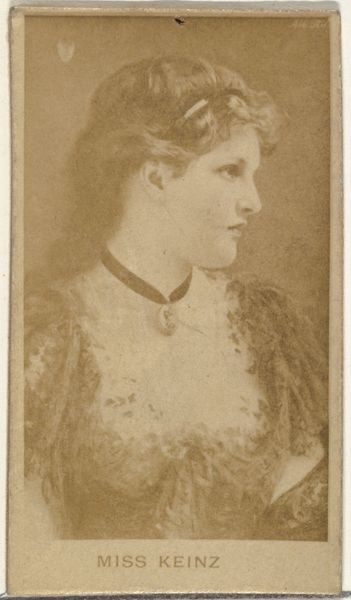
photography, albumen-print
#
portrait
#
aged paper
#
toned paper
#
yellowing background
#
photo restoration
#
photography
#
photojournalism
#
united-states
#
albumen-print
Dimensions: 3 7/16 x 2 1/8 in. (8.73 x 5.4 cm) (image)4 1/8 x 2 1/2 in. (10.48 x 6.35 cm) (mount)
Copyright: Public Domain
Editor: This albumen print from around 1868, residing here at the Minneapolis Institute of Art, captures the likeness of Pauline Markham, an actress. It’s got a warm, sepia tone that immediately brings a sense of age and formality. Curator: Indeed. The tonality is quite soft and consistent throughout the oval composition, serving to isolate the subject. Note how the linearity of her dress contrasts with the organic curves of her face and hair, creating visual interest despite the limited palette. Editor: Absolutely. And the choice of the albumen print itself is intriguing. It was a labor-intensive process requiring careful chemical baths and meticulous darkroom work. You have to appreciate the hands-on craft that went into producing such a portrait. Think of the labor, the time spent coating the paper... Curator: The albumen process contributes greatly to the overall effect, doesn't it? Its inherent qualities—the slight gloss, the capacity for fine detail—elevate the portrait beyond a mere snapshot. The technique allows us to appreciate the subject's physical presence. Editor: And consider Markham herself. As an actress, she would have understood the power of image and presentation. The dress, with its bold stripes, speaks of performance, of a constructed identity for public consumption. Her labor in performance connects with Gurney's own labor of material production. Curator: It’s worth considering the photograph's purpose within the semiotic system of portraiture. The stark background throws into sharp relief the elaborate textile of her garment. How do you interpret this element of performativity? Editor: It's about highlighting the role of performance in everyday life, don't you think? She’s actively engaged in self-fashioning, in crafting her image through both dress and pose. In today’s context, we still encounter echoes of the production processes through the use of vintage filters... Curator: Perhaps that explains the lasting appeal of these historical processes! Editor: Indeed, it all reflects a connection between the past and contemporary material cultures of image making. It is really insightful to note the connections between manual practices of old, and algorithmically-based ones of the present.
Comments
No comments
Be the first to comment and join the conversation on the ultimate creative platform.
